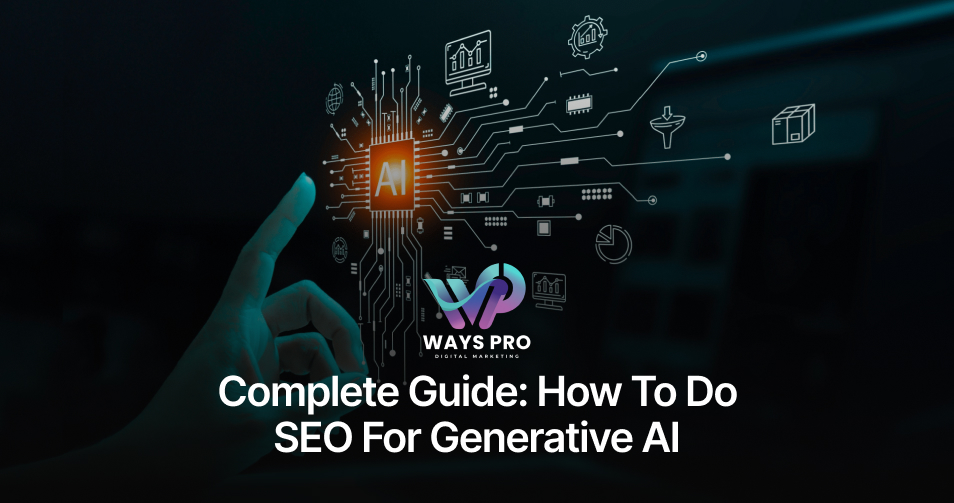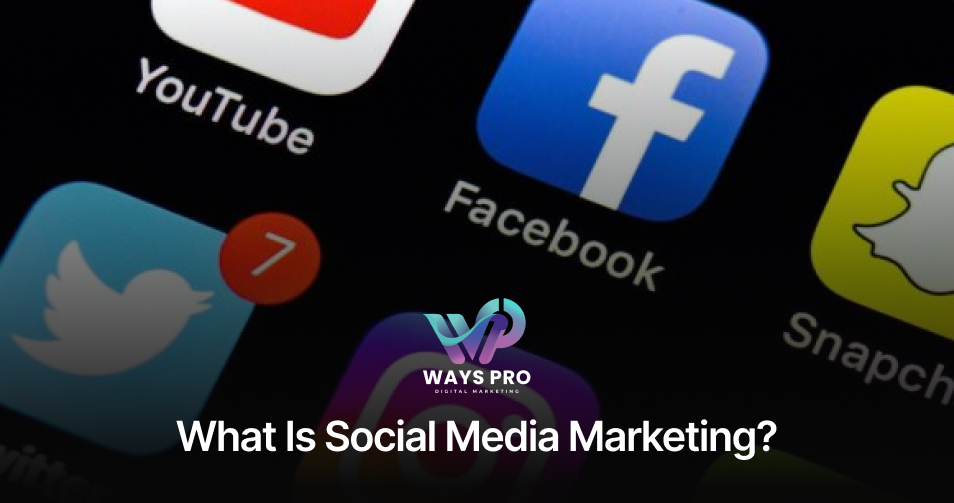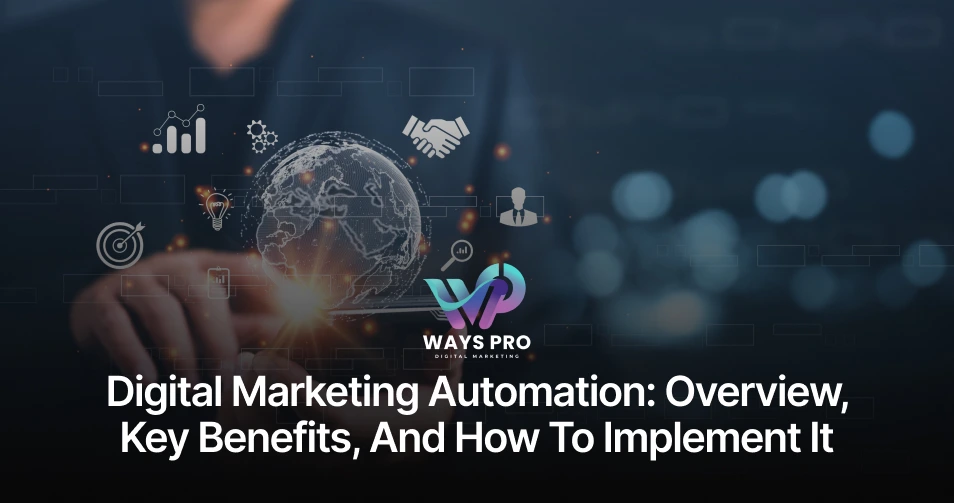Generative AI is transforming the SEO landscape, introducing new tools, strategies, and challenges for digital marketers and content creators. As search engines evolve, incorporating AI-powered features like Google’s Search Generative Experience (SGE), the way content is discovered, ranked, and presented is rapidly changing.
This guide will walk you through everything you need to know about doing SEO for generative AI, from foundational concepts to advanced strategies.
Understanding Generative AI and Its Impact on SEO
What is Generative AI?

Generative AI refers to artificial intelligence systems capable of creating new content, text, images, audio, or code, by learning from vast datasets.
Tools like ChatGPT, Claude, and Google’s Gemini are examples, able to produce human-like responses, summaries, and creative works.
How Generative AI Changes SEO
Generative AI is revolutionizing SEO by transforming how content is created and how users experience search. AI tools can now generate large volumes of relevant content quickly, making it easier for websites to stay fresh and populated with valuable material.
At the same time, search engines are leveraging generative AI to synthesize information from multiple sources, offering users concise, summarized overviews rather than traditional ranked lists.
This shift has given rise to a new discipline called Generative Engine Optimization (GEO), which focuses on optimizing content specifically for AI-generated search results instead of relying solely on traditional SERP rankings.
Key Principles for SEO in the Age of Generative AI
1. Prioritize User Intent and Clarity
- Create content that directly and succinctly answers user queries.
- Break down complex topics into digestible, easily understood sections.
- Use a conversational, jargon-free tone unless technical detail is required.
2. Structure Content for AI and Human Readers
- Use clear headings (H1, H2, H3), bullet points, and short paragraphs.
- Add visual elements, images, infographics, videos, to explain and illustrate concepts.
- Include FAQ sections to address common questions concisely1.
3. Focus on Readability and Engagement
- Keep sentences and paragraphs short.
- Use transition words and bucket brigades to guide readers smoothly.
- Highlight key points with bold or italic text sparingly.
- Ensure mobile-friendly formatting and accessible font choices.
Leveraging Generative AI Tools for SEO

Content Creation and Optimization
Generative AI tools can dramatically accelerate the process of drafting articles, product descriptions, and landing pages. However, while these tools can produce large volumes of content, it’s essential to review and refine their outputs.
Human oversight is necessary to inject expertise, nuance, and authenticity, qualities that AI alone cannot fully replicate. Always ensure that your content is original, valuable, and tailored to your specific audience, as search engines increasingly reward depth and expertise.
Keyword Research and Topic Discovery
AI tools have revolutionized keyword research by analyzing vast datasets to uncover high-value keywords, including long-tail and emerging terms. These tools can also analyze competitor content and user search patterns, allowing you to identify content gaps and stay ahead of trends.
By continuously monitoring the competitive landscape, you can adapt your content strategy in real time, ensuring your site remains relevant and authoritative.
Meta Data and On-Page Elements
AI can optimize meta tags, titles, and descriptions by analyzing what works best in current search results.
This includes generating keyword-rich titles that fit within optimal character limits and crafting meta descriptions that balance informativeness with persuasion. AI also helps avoid keyword stuffing by understanding semantic relationships, thus reducing the risk of search penalties.
Structuring URLs and internal links for clarity further enhances both user experience and SEO performance.
Internal Linking and Site Architecture
AI-powered tools can audit your website’s internal linking structure, identifying opportunities to connect related content and improve navigation.
By analyzing user behavior and content relevance, AI can suggest strategic placements for internal links, ensuring that users (and search engines) can easily discover your most valuable content.
Organizing your content into logical taxonomies that reflect user intent and search behavior not only improves SEO but also creates a more intuitive browsing experience.
The Broader Impact of Generative AI on SEO

Generative AI is not just a tool for automation; it’s a catalyst for a more strategic, data-driven approach to SEO. By harnessing AI’s ability to process and analyze massive amounts of data, marketers can make more informed decisions about content creation, keyword targeting, and site structure.
This leads to more efficient workflows, higher-quality content, and ultimately, superior search engine rankings.
However, it’s important to remember that AI is most effective when used in conjunction with human expertise. While AI can handle repetitive tasks and surface insights, it cannot replace the creativity, critical thinking, and nuanced understanding that human SEO professionals bring to the table.
The best results come from a partnership between AI-powered tools and skilled practitioners who can interpret and act on the data these tools provide
Advanced SEO Strategies with Generative AI
Generative AI is reshaping SEO by redefining website structure, user engagement, and content relevance.
Adaptive Navigation and Taxonomy
I analyze user journeys and on-site search behavior to recommend smarter navigation and category structures.
By aligning your site architecture with both content supply and real user demand, AI ensures intuitive navigation, better content discovery, and improved SEO performance.
Personalization and User Experience
Generative AI personalized content recommendations in real time based on user behavior, boosting engagement and dwell time.
It also powers automated A/B testing, refining headlines, layouts, and CTAs to match user preferences, leading to higher satisfaction and SEO gains.
Content Freshness and Relevance
AI streamlines content audits by flagging outdated material and suggesting updates based on trending queries and fresh data.
This proactive maintenance keeps your content comprehensive, timely, and favored by search engines.
Optimizing for Generative Engine Results (GEO)

A. Understanding Generative Engine Overviews
- AI-powered search results often present synthesized answers from multiple sources, reducing the visibility of individual websites.
- To be featured, your content must be authoritative, concise, and directly answer common queries.
B. Creating “AI-Friendly” Content
- Write clear, direct answers to potential questions in your niche.
- Use structured data (schema markup) to help AI systems understand your content’s context and relevance.
- Include lists, tables, and step-by-step instructions where appropriate, these formats are easily extracted and summarized by AI13.
C. Building Topical Authority
- Cover your subject comprehensively, creating clusters of related content around core topics.
- Link related articles together, signaling depth and expertise to both users and AI systems.
Technical SEO for Generative AI

1. Site Speed and Mobile Optimization
Ensure fast load times and seamless mobile experiences, AI-powered search engines prioritize user satisfaction.
2. Structured Data and Schema Markup
- Implement schema for articles, FAQs, products, and other relevant content types.
- Structured data helps AI engines extract and present your content accurately in overviews and featured snippets.
3. Image and Video SEO
- Use AI to generate descriptive, keyword-rich alt text for images.
- Optimize video titles, descriptions, and transcripts for search visibility.
- Leverage AI for thumbnail selection, closed captioning, and subtitle generation.
Ethical and Practical Considerations
A. Quality Control
While AI-generated content offers efficiency, it can sometimes lack nuance or introduce factual inaccuracies. To maintain high standards, it’s essential to thoroughly fact-check and carefully edit all AI outputs.
Avoid over-relying on automation; instead, combine AI capabilities with human expertise to ensure the final content is accurate, insightful, and genuinely valuable.
B. Avoiding Duplicate and Low-Value Content
Generative AI can unintentionally create similar or repetitive content across different websites, diminishing originality and SEO value. To stand out, it’s important to prioritize unique insights, conduct original research, and incorporate personal experiences.
This approach ensures your content remains distinctive, authoritative, and genuinely valuable to your audience.
C. Transparency and Disclosure
When using AI in content creation, it’s important to maintain transparency, especially in regulated industries.
Disclosing the role of AI where relevant helps build trust with your audience, ensures compliance with industry standards, and reinforces the credibility of your brand.
Measuring and Improving SEO Performance

1. Analytics and Monitoring
- Use analytics tools to track rankings, traffic, engagement, and conversions.
- Monitor how your content appears in AI-generated search results and adapt your strategy as needed.
2. Continuous Optimization
- Regularly update your keyword research and content strategy based on evolving trends and AI search behaviors.
- Use AI-driven A/B testing to refine landing pages, CTAs, and content layouts for maximum impact.
Future Directions: Staying Ahead in Generative AI SEO
To stay competitive in the evolving SEO landscape, embracing automation is essential. Automating repetitive tasks like keyword clustering, internal linking, and meta tag generation allows teams to focus more on strategic initiatives.
Equally important is investing in expertise by developing your team’s skills in both SEO and AI, ensuring you can fully leverage emerging tools and techniques.
Lastly, staying informed about search engine updates, especially how AI-powered platforms like Google’s SGE present and rank content, will help you adapt quickly and maintain strong visibility in search results.
Conclusion
SEO for generative AI is not about abandoning traditional best practices, but about evolving them for a new era of search. By combining the power of AI with human creativity and expertise, you can create content that stands out in both classic and AI-driven search results. Focus on clarity, relevance, structure, and user intent while leveraging AI for efficiency and insight and your SEO strategy will thrive in the age of generative AI.







